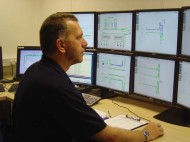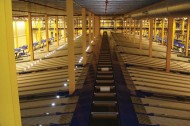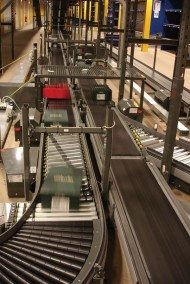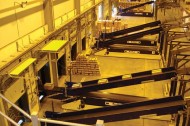 Since being established by the Clark brothers, James and Cyrus, in 1825, Clarks has grown to become a major player in the footwear market and a well-respected brand on high streets not only in Britain but around the globe. As well as being the number one shoe brand in the UK, Clarks’ growth in North America, Western and Eastern Europe, India and China means that it is now the world’s largest casual and smart shoe company and the fourth largest footwear company on the planet.
Since being established by the Clark brothers, James and Cyrus, in 1825, Clarks has grown to become a major player in the footwear market and a well-respected brand on high streets not only in Britain but around the globe. As well as being the number one shoe brand in the UK, Clarks’ growth in North America, Western and Eastern Europe, India and China means that it is now the world’s largest casual and smart shoe company and the fourth largest footwear company on the planet.
Over the decades, Clarks’ product ranges have seen fashions come and go – from winklepickers to sneakers – but the company has had its feet firmly rooted throughout at the very spot where the Clark brothers had their tannery: the village of Street in Somerset. Major changes in world trade in the 1990s forced Clarks to take the tough decision to move its manufacturing operations out of the UK but its distribution remains based in Street.
A major distribution operation
With Clarks selling some 35 million pairs of shoes per annum through 1,900 outlets, distribution of its footwear is a significant operation. The site in Street serves all UK and most global customers, although an independent facility in North America takes care of distribution in the US and Canada. Says Paul Clark, Systems and Administration Manager at Clarks, “We’re shipping around 26 million pairs a year from this facility, an average of about half a million a week.”
New automated warehouse
 To meet predicted growth for the company, Clarks took the decision to make a major investment in its distribution early in the new millennium. The result was a 28,000m2 state-of-the-art automated warehouse, supplied by KNAPP as main contractor and built on a seven-hectare site adjacent to the company’s previous facility. Explains Paul Clark, “The DC was the biggest investment Clarks had ever made and decisions needed to be made to drive the business forward. The original choice of KNAPP as a supplier was made by the client feeling comfortable with the supplier and the supplier feeling comfortable with the client. Of course, the solution had to meet the given criteria, but a working partnership was key to the supplier selection.”
To meet predicted growth for the company, Clarks took the decision to make a major investment in its distribution early in the new millennium. The result was a 28,000m2 state-of-the-art automated warehouse, supplied by KNAPP as main contractor and built on a seven-hectare site adjacent to the company’s previous facility. Explains Paul Clark, “The DC was the biggest investment Clarks had ever made and decisions needed to be made to drive the business forward. The original choice of KNAPP as a supplier was made by the client feeling comfortable with the supplier and the supplier feeling comfortable with the client. Of course, the solution had to meet the given criteria, but a working partnership was key to the supplier selection.”
Automated storage
Goods – mostly from the Far East – arrive at the DC and, once unloaded and checked for quality, are stored in carton format in an automated storage and retrieval system (ASRS). An army of 25 miniload cranes in aisles almost 13m tall and 120m long serve the store’s 480,000 carton locations. Says Paul Clark, “The total capacity of that area is about five million pairs. However, we don’t want to get to five million in the ASRS, because all that stock costs money. So we try to optimise it at 85% fill, which is where it works best. We have some 30,000 SKUs in the building at any time and all of those have availability for picking.”
The miniload cranes feature a load-handling device that can handle two-deep, enabling increased storage depth and a throughput of 2,400 cartons per hour.
Cartons are retrieved from the ASRS to replenish the picking zones or – in the case of customer orders requiring full case cartons or pre-picked orders – for direct transport to the dispatch area.
In addition to the ASRS, KNAPP supplied cross-belt sorters and a conveyor system that was specially adapted to handle shoe cartons of varying dimensions. The conveyors also needed to align the cartons to allow their barcodes to be read automatically.
Picking and sortation
 Order picking is carried out using RF terminals which communicate with the warehouse management system. Before this, however, customer orders are grouped in batches and allocated to available sorter chutes in the sortation area. Only then can an operator scan the required cartons and place them on one of ten conveyors for transport to the sorting area. Here, two cross-belt sorters – positioned one above the other – sort the products into customer-specific batches, diverting them onto a total of 600 chutes. roughput of 12,000 cartons per hour can be achieved.
Order picking is carried out using RF terminals which communicate with the warehouse management system. Before this, however, customer orders are grouped in batches and allocated to available sorter chutes in the sortation area. Only then can an operator scan the required cartons and place them on one of ten conveyors for transport to the sorting area. Here, two cross-belt sorters – positioned one above the other – sort the products into customer-specific batches, diverting them onto a total of 600 chutes. roughput of 12,000 cartons per hour can be achieved.
Fulfilling on-line orders
When the new DC was conceived, the burgeoning growth in on-line sales had not been predicted in the footwear market. Such was the flexibility and future-proofing designed by KNAPP in the Street facility, however, that Clarks has so far been able to handle its on-line sales at the DC since its e-commerce offering went live in 2008. Customers can place orders on line or in store for collection in store or home delivery.
Major upgrade
The most recent modifications to the DC, which will be completed by KNAPP before the end of 2010, will help Clarks to meet growth in its sales overseas but there may be a limit to the growth that can be handled in Street. As Paul Clark admits, “We are absorbing that growth but what happens when we get to the absolute limits of the building? The building must not become a constraint on the business, as was the case with our last building. At the moment we are solving capacity with minor physical tweaks and software changes. Together with KNAPP we are learning how we can optimise or make the capacity cycle spin a little faster – we are both gaining knowledge in this area.”
Resident service team
 Since the automated handling system went live in 2005, Clarks has contracted KNAPP to supply a resident customer support team at the facility – one of five resident service teams that KNAPP has in the UK. As well as enabling system issues to be rectified quickly, minimising costly downtime, having resident KNAPP engineers on site has paid other dividends. Through the use of thermal imaging techniques, the team of KNAPP technicians estimates that it saved Clarks in excess of £250,000 in potential repair and downtime costs in one 3-month period alone.
Since the automated handling system went live in 2005, Clarks has contracted KNAPP to supply a resident customer support team at the facility – one of five resident service teams that KNAPP has in the UK. As well as enabling system issues to be rectified quickly, minimising costly downtime, having resident KNAPP engineers on site has paid other dividends. Through the use of thermal imaging techniques, the team of KNAPP technicians estimates that it saved Clarks in excess of £250,000 in potential repair and downtime costs in one 3-month period alone.
Thermal imaging
At the Street DC, thermal imaging has highlighted a damaged motor and gearbox, a problem PLC, a phase imbalance on a shrink-wrapping machine and damage to the X-axis on a stacker crane. Explains Ebb Kretschmer, Head of Customer Services for KNAPP UK Ltd, “We use thermal imaging as part of our regular maintenance regimes. It is highly effective and allows us to be proactive rather than reactive to faults and failures.” The benefits are not limited to avoidance of costly downtime and improved safety, however. “Dealing with any hotspots also increases the energy efficiency of the system and adds to the lifespan of the capital equipment,” says Ebb Kretschmer.
KNAPP UK Ltd
Mr Craig Rollason, Head of Sales & Marketing
Tel: 01844 202149
Email: craig.rollason@KNAPP.com




Comments are closed.